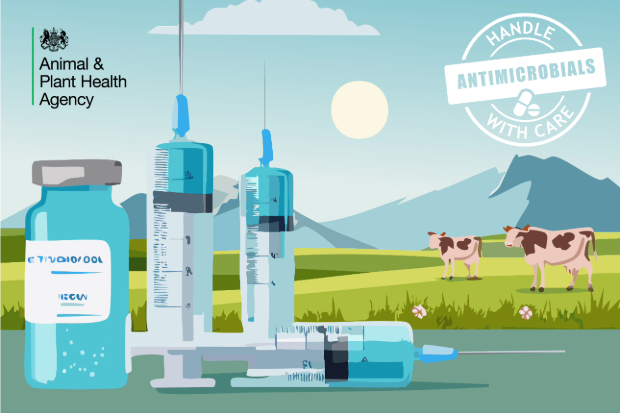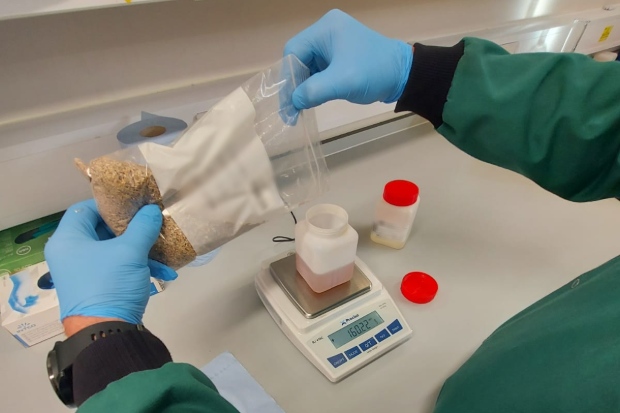
Acquiring an infection when eating contaminated food is an unpleasant experience that unfortunately happens to many of us. If it is a severe bacterial infection, and treatment with antibiotics is made more difficult because the disease-causing bacteria have resistance to antimicrobial drugs, the experience is even more unpleasant!
At APHA, reducing the risk of foodborne disease from foods of animal origin is one of our key focus areas. We work nationally and internationally to make sure that we are abreast of the latest developments, and we are passionate about safe-guarding public health. For example, we have a team that focuses on the control of Salmonella, a bacterium that can cause food poisoning in people and can lead to serious illness, especially in children and immunocompromised individuals. We work with the livestock and food industries and other parts of government to make sure that livestock is checked for this zoonotic pathogen and appropriate measures are implemented to protect the food chain.

At APHA, we also have a team of veterinarians and scientists that specialise in antimicrobial resistance (AMR). AMR occurs when a microorganism is no longer affected by medicines, such as antibiotics, that would normally stop it, and it is a big risk that modern society faces. The UK has recently published its latest National Action Plan (NAP) confronting AMR, and APHA plays a key role protecting animals and people from the risk of AMR.
As part of the NAP, since 2022, we have been involved in a large cross government programme called PATH-SAFE (Pathogen Surveillance in Agriculture, Food and Environment). This programme focuses on improving the detection and tracking of foodborne human pathogens and associated AMR through the whole agri-food system from farm-to-fork. At APHA, we have been involved in six projects, all focussing on AMR.
One of these projects focussed on AMR in the feed that is fed to livestock in the UK to understand whether animal feed is a potential source of AMR bacteria. We wanted to find out which AMR bacteria are in feed before and after processing at the feed mill. Animal feed is not normally checked for AMR so PATH-SAFE was a good opportunity to fill this surveillance gap. We worked with the Agricultural Industries Confederation who supported this project. We isolated bacteria from feed samples in our APHA laboratory in Newcastle and checked them for AMR. We used innovative whole genome sequencing technology to analyse their genome to investigate the antibiotic resistance genes and compare them with bacteria isolated from animals.

“This was a great opportunity for the Newcastle laboratory team to be involved in the Path-Safe project enabling us to use our expertise in the detection of several bacterial contaminants in animal feed samples. The team have expanded their skills throughout the project using different methods of bacterial detection that they don’t routinely use. The team built up a good rapport with the feed producer enabling them to visit the plant and assist in the taking of samples for submission to the laboratory. The project was also an excellent way to build connections with the other teams involved in the project.”
APHA Newcastle Team
“I was excited to start working on this project because of my previous experience working in a feed mill. The isolated bacteria had their DNA extracted for sequencing – a process where we read their genetic code. Then I used a computer to try to find close matches to a database of about 3000 genes we know are linked AMR. This can tell us if the finished feed is a source of the AMR we see in animals, and if any of the feed ingredients are bringing AMR from the environment into the finished feed.”
Graham Hill
Bioinformatician, APHA
Another project focussed on unpasteurised milk. The milk pasteurisation process destroys bacteria that might be present in the milk. By testing pre-pasteurised milk, we wanted to assess what AMR might be present in dairy cattle in the UK. We did find bacteria in the milk, but this was expected as the milk was tested before pasteurisation. We received samples of milk through a collaboration with National Milk Records and Arla at our APHA Starcross Laboratory. The project helped our understanding of AMR sources in dairy cattle.
“The project was the perfect opportunity to study the range of bacteria found in pre-pasteurised milk. We not only carried out the initial isolation and identification of the bacteria, but we also tested for any AMR found in them by using a laboratory method called Minimum Inhibitory Concentration broth microdilution. The results were used to make a comparison with the genome sequencing data to reveal the level of resistance present. This work showed how important it is to monitor unpasteurised milk, especially with mastitis cases being one of the biggest reasons for use of antibiotics in the dairy industry”.
APHA Starcross Laboratory Team

“It was fascinating to explore the types of bacteria and resistances found in milk before it got pasteurised. This project provided an exciting opportunity to co-ordinate this large-scale study, which included scientist at National Milk Records, who sent milk samples to APHA Starcross. There, we isolated the target bacteria on different agar media and tested their ability to grow in the presence of different antibiotics. 1,394 bacteria were genome sequenced and analysed at APHA Weybridge, where we identified the bacterial species, the genetic types and the types of AMR genes each bacterium possessed. We also worked with epidemiologists to investigate the occurrence of resistant bacteria and identify any regional differences. This collaborative project between microbiologist, geneticists, and epidemiologists, not only enhanced our understanding of AMR in dairy cattle but also highlighted the importance of monitoring and managing antibiotic resistance in the dairy industry”.
Dr Manal AbuOun
Senior Scientific Officer, APHA
When delivering these projects, we worked with industry and other government departments, such as the Veterinary Medicine Directorate and the Food Standards Agency. Filling AMR surveillance gaps in different food production sectors directly addresses the objectives of the UK NAP and helps our understanding of the AMR landscape, ultimately to better protect animal and human health.
Further information
PATH-SAFE programme
The PATH-SAFE programme, led by the Food Standards Agency (FSA) and funded by the His Majesties Treasury Shared Outcomes Fund, has brought together experts in human, animal and environmental health, from across government, academia and industry, to co-design and deliver more than 30 pilot projects. Further details about the programme, and its constituent projects, can be found on the PATH-SAFE website.
Veterinary Antimicrobial Resistance and Sales Surveillance (VARSS) report
The UK-VARSS Report presents veterinary antibiotic sales, usage and resistance data from the UK. The latest version can be found here.

Recent Comments